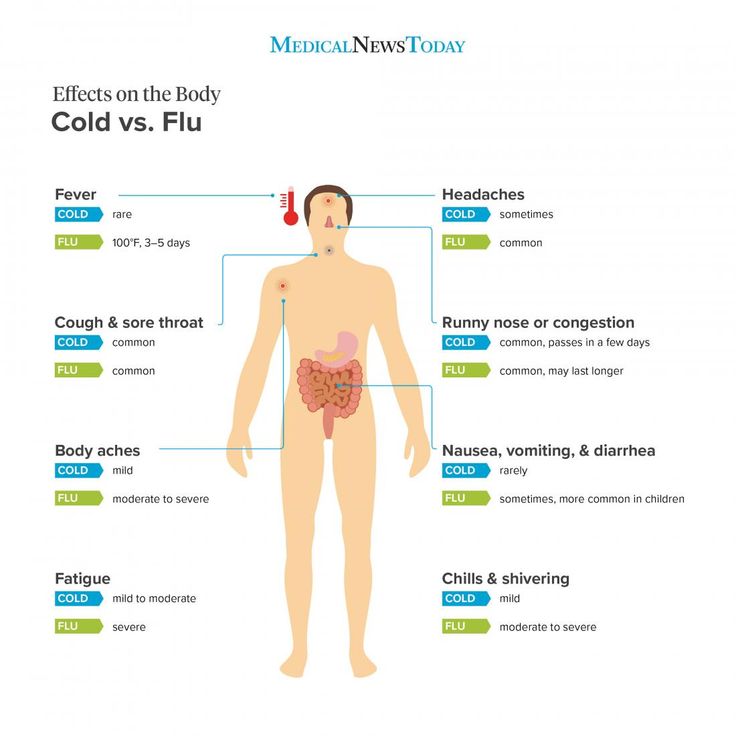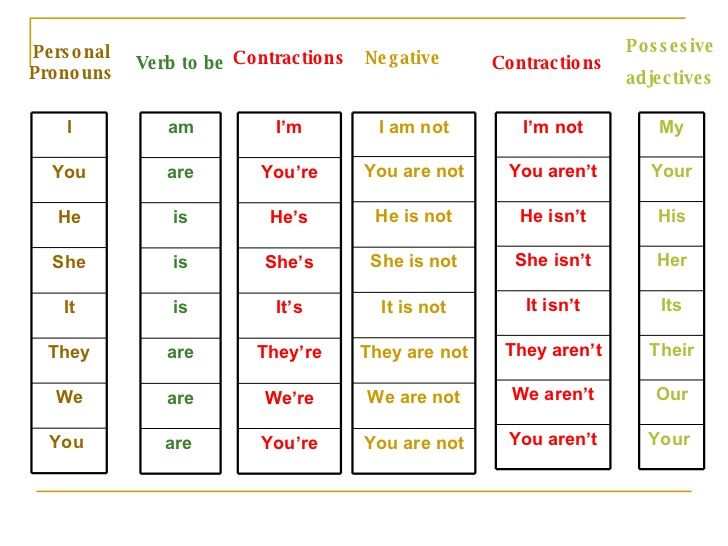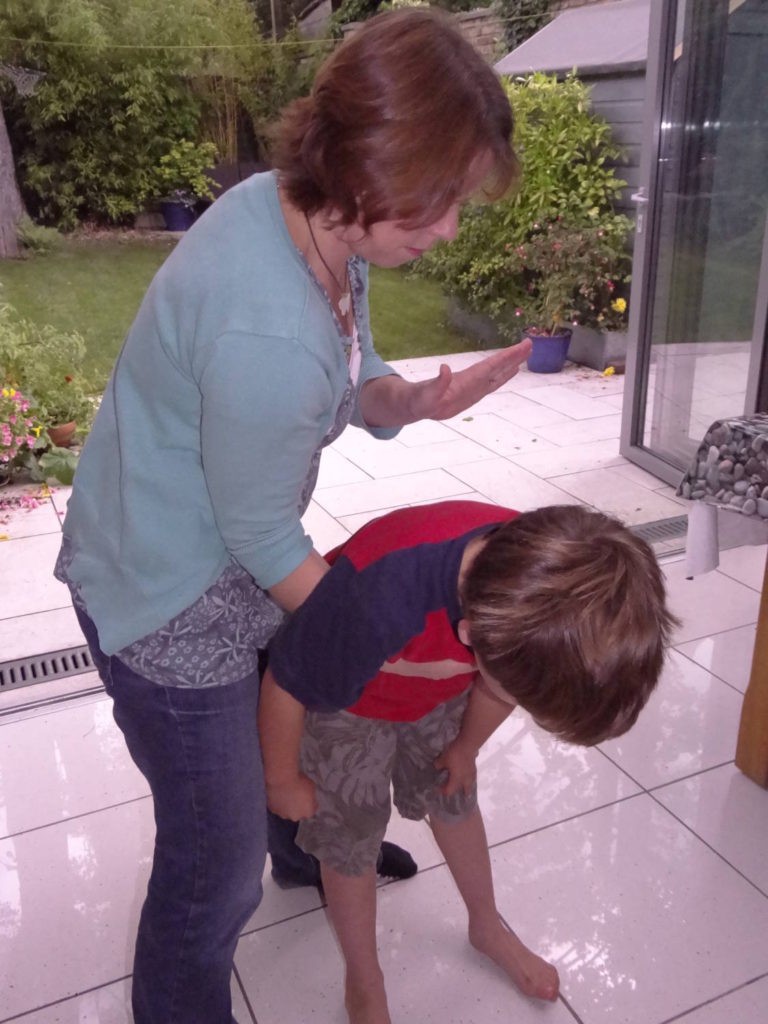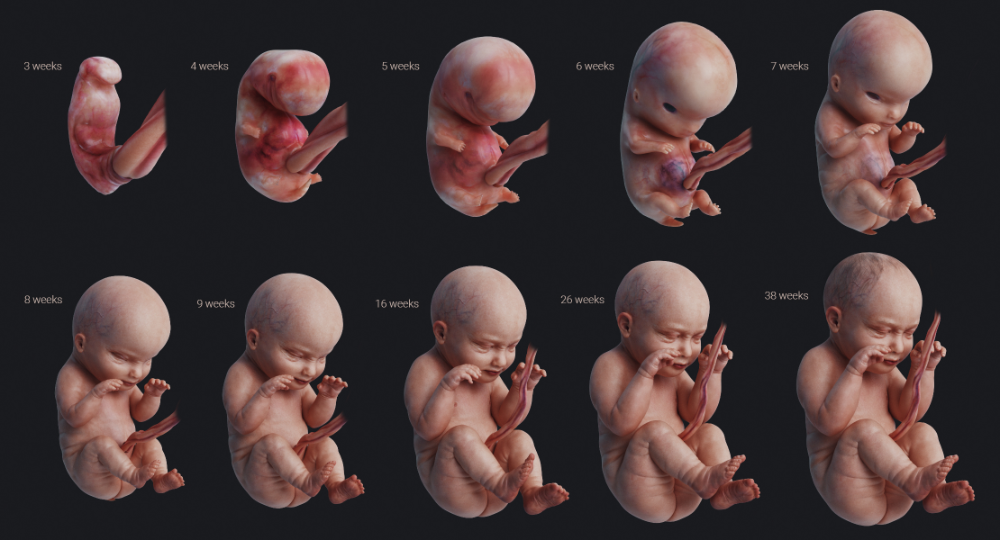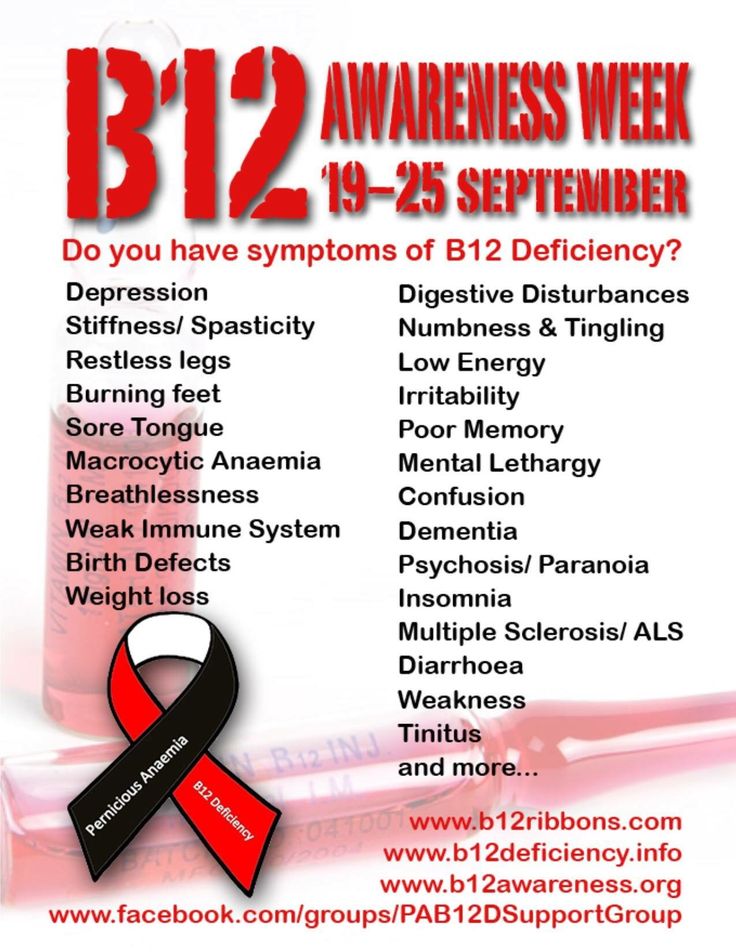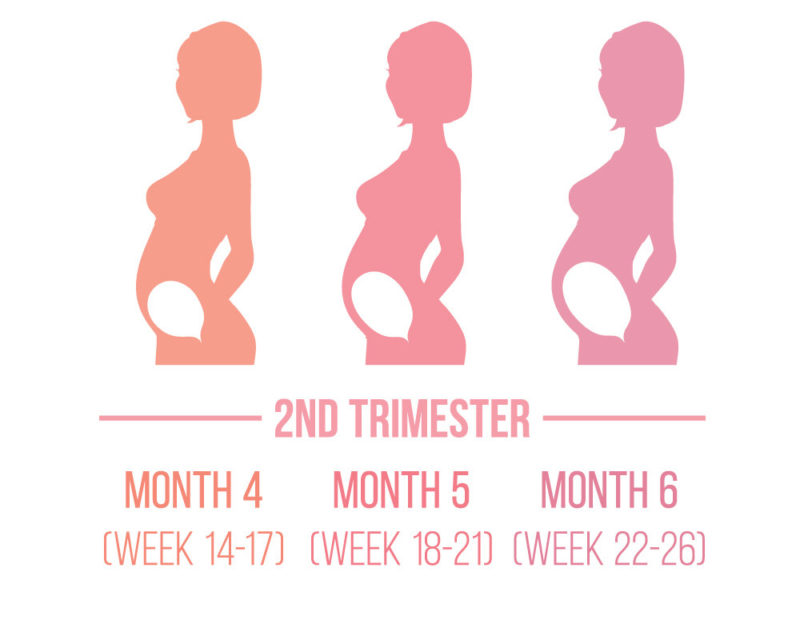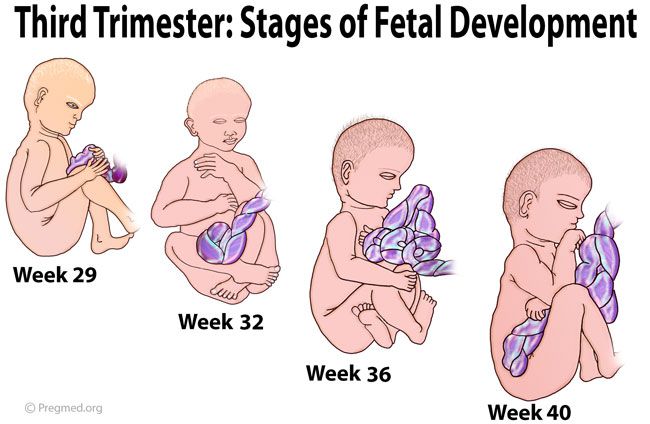How to treat cold sore on child
Cold Sores in Children: About the Herpes Simplex Virus
A child's toddler and preschool-age years are filled with new experiences, like a first playdate or first tricycle. Often by around age 5, however, a less-than-fun first also may pop up: a child's first cold sore.
What are Cold Sores?
Cold sores (also called fever blisters or oral herpes) start as small blisters that form around the lips and mouth. They sometimes appear on the chin, cheeks, and nose, too. After a few days, the blisters usually begin to ooze, then form a crust and heal completely in one to two weeks.
Despite their name, cold sores actually have nothing to do with colds. In children, cold sores are usually caused by the herpes simplex virus type 1 (HSV-1). Genital herpes is usually caused by a different strain, herpes simplex virus type 2 (HSV-2), although both virus strains can cause sores in any part of the body.
Most people are first exposed to HSV between ages 1 and 5 years of age, and more than half of people in the United States are infected with it by the time they become adults. Beyond the uncomfortable sores that the virus can cause, HSV is usually harmless.
How Do Cold Sores Spread?
Cold sores are highly contagious. They can spread through saliva, skin-to-skin contact, or by touching an object handled by someone infected with the virus.
When a child develops a cold sore for the first time (also called primary HSV), the blisters often spread beyond the lips to the mouth and gums. A child may also have a fever, swollen and tender lymph glands, sore throat, irritability and drooling. Sometimes symptoms are so mild, though, parents may not even notice any of them.
When problems can arise:
The virus from cold sores can spread to the eyes, which can lead to HSV keratitis, an infection of the cornea—the clear dome that covers the colored part of the eye. The infection usually heals without damaging the eye, but more severe infections can lead to scarring of the cornea or blindness. HSV keratitis is a major cause of blindness worldwide.
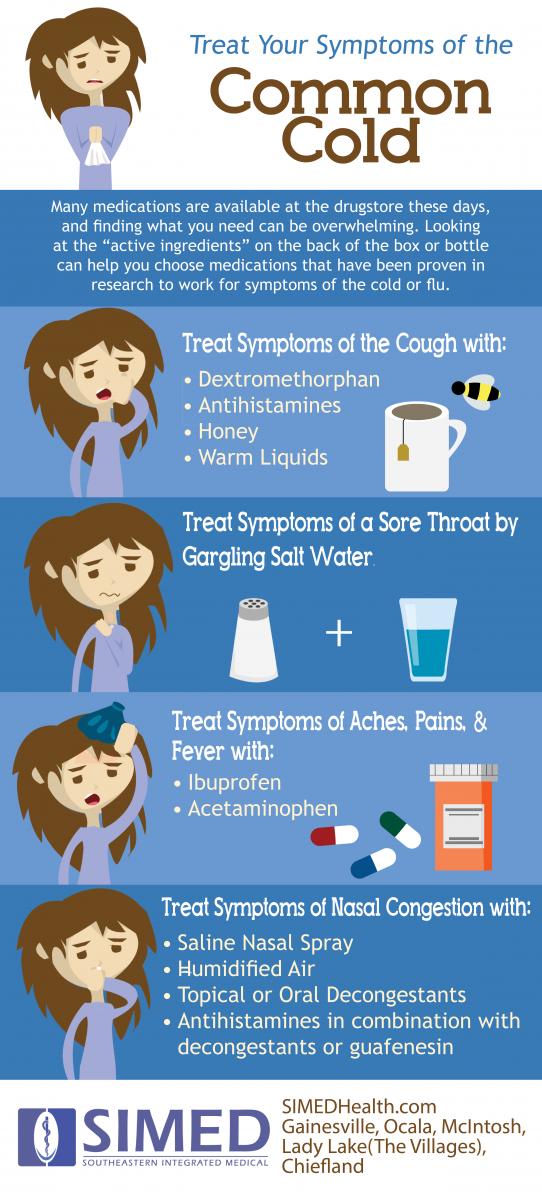
HSV is especially dangerous to babies under 6 months of age. Parents or relatives with cold sores should be especially careful not to kiss babies—their immune systems are not well developed until after about 6 months old. Signs that a baby may have been infected with HSV include low grade fever and one or more small skin blisters. These symptoms can occur 2 to 12 days after HSV exposure. If these occur or if you have any concerns, call your pediatrician.
Do Cold Sores Come Back?
After a child's first cold sore, the virus settles into bundles of nerve cells in the body—causing no symptoms unless it activates and travels back up to the skin's surface. While the virus remains in the body for the rest of your life, the recurrence of cold sores is highly variable. Some children may never get another cold sore, while others may have multiple outbreaks a year. When the virus does reactivate, cold sores tend form again at the same spot but usually not inside of the mouth.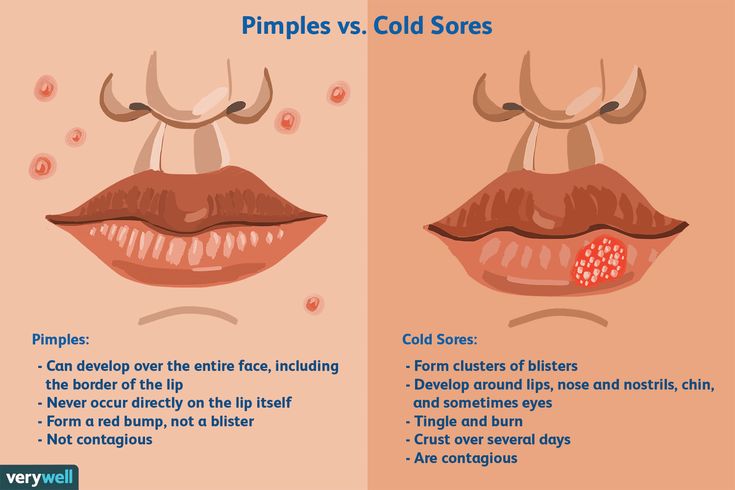
The first signs of a flare up include tingling, itching, or burning where the cold sore moves toward the skin. Parents might notice their child keeps touching or scratching a spot on the lip that starts to swell and redden before sores form.
Common Cold Sore Triggers:
Once a child is infected with the cold sore virus, it is more likely to return during times when the body's immune system is run down or the skin becomes irritated from other causes.
Common cold-sore triggers for children previously exposed to the virus include:
Fatigue and stress
Exposure to intense sunlight, heat, cold, or dryness
Injuries to or breaks in the skin
Illness (i.e., cold or flu)
Dehydration and poor diet
Fluctuating hormones (i.e., during a teen's menstrual periods, etc.)
What Parents Can Do:
Although there is currently no cure for cold sores, the good news is that they go away on their own.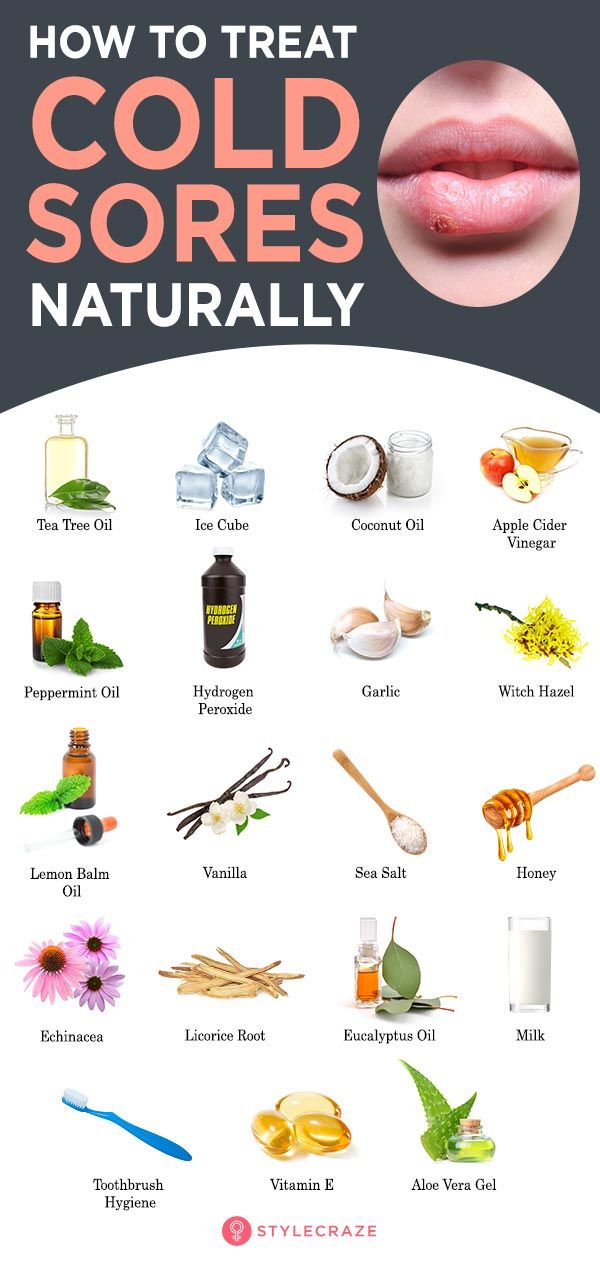 Some may take a little longer than others to heal. Cold sores are typically not treated, because the medications currently available only slightly speed up healing time. Parents can protect against the cold sores' spread, help relieve the child's discomfort during a flare-up, and try to avoid possible triggers.
Some may take a little longer than others to heal. Cold sores are typically not treated, because the medications currently available only slightly speed up healing time. Parents can protect against the cold sores' spread, help relieve the child's discomfort during a flare-up, and try to avoid possible triggers.
Stop the spread.
Try to prevent your child from scratching or picking at cold sores. This can spread the virus to other parts of the body, such as fingers and eyes, as well as to other children who touch toys and other objects they play with. Wash hands and clean toys regularly.
During a cold sore flare-up, don't let your child share drinks or utensils, towels, toothpaste or other items to avoid spreading the infection through saliva. Also, wash items such as towels and linens in hot water after use.
Children usually can go to child care or school with an active infection, but your pediatrician may suggest keeping them home if they drool a lot or are having their very first HSV outbreak.
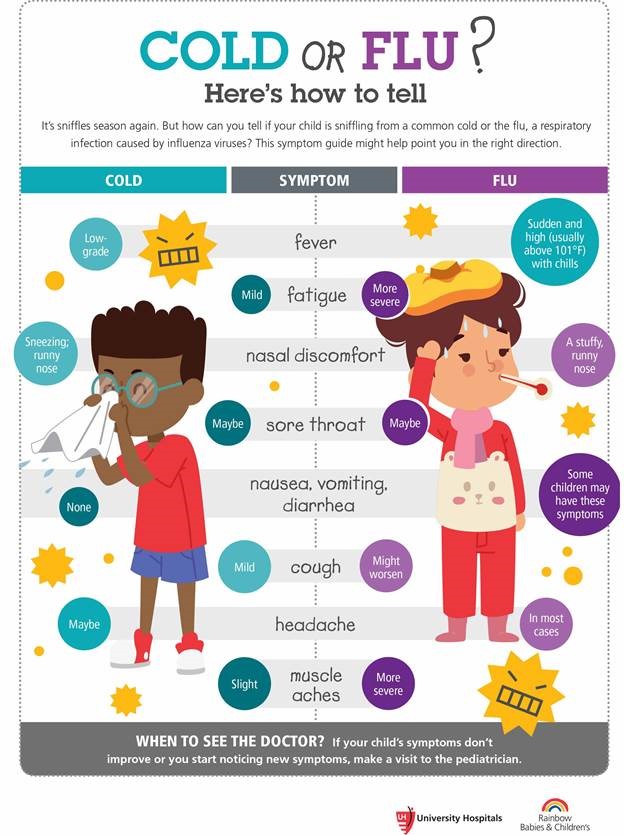 See When to Keep Your Child Home from Child Care for more information.
See When to Keep Your Child Home from Child Care for more information. If your child participates in sports that involve skin-to-skin contact such as wrestling, he or she should sit out during an active cold sore infection. Make sure mats and other equipment are cleaned regularly after use.
Ease discomfort.
Apply ice or a warm washcloth to the sores to help ease your child's cold sore pain.
Chilled or icy treats such as smoothies may be soothing to tender lips and can help avoid dehydration.
Avoid giving your child acidic foods during a cold sore outbreak (e.g., citrus fruits or tomato sauce). These can irritate cold sores.
If your child's cold sores continue to hurt—especially if he or she does not want to eat or drink because of mouth pain—ask your pediatrician about giving a pain reliever such as acetaminophen or ibuprofen. Your pediatrician may also suggest an over-the-counter cream or a prescription anti-viral cream to help reduce cold sore symptoms and shorten outbreaks by a day or two.
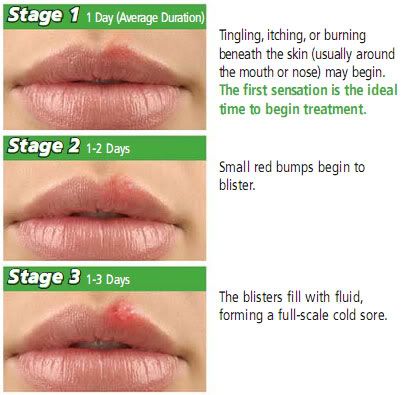
Avoid triggers.
Skin irritation can bring on a cold sore outbreak, so be sure your child uses lotion and a lip balm containing sunscreen or zinc oxide before heading outdoors.
Make sure your child gets enough sleep, exercise, and eats a well-balanced diet.
Help your child manage stress, which can increase the likelihood of cold sore outbreaks.
When to See Your Pediatrician:
During your child's first cold sore infection: This is especially recommended if your child has a known difficulty in fighting infections or a chronic skin condition such as eczema.
If your newborn develops a blister-like rash or fever: This could be symptoms of a dangerous, neonatal herpes simplex infection.
If there are sores or blisters near your child's eyes: HSV is the most common cause of corneal infections.
If your child develops a headache, combined with confusion, seizure or fever during a cold sore outbreak: This could signal a dangerous brain infection caused by the virus, including meningitis or encephalitis.

If the sores do not heal on their own within seven to 10 days: Your pediatrician might want to rule out a secondary bacterial infection and/or any other medical condition.
If skin surrounding cold sores becomes reddened, swollen or feels hot to the touch: This may be signs of a secondary bacterial infection. Infection that spreads to the bloodstream and body-wide (sepsis) can also be a concern for children whose immune systems are weakened by certain diseases and medications.
If your child gets frequent cold sores: Children with more than five or six outbreaks a year might benefit from antiviral medications. Talk to your pediatrician about a prescription if your child's outbreaks are frequent.
Additional Information & Resources:
Germ Prevention Strategies
Reducing the Spread of Illness in Child Care
Hand, Foot & Mouth Disease: Parent FAQs
Herpes Simplex Virus in the Newborn (New York State Department of Health)
Basics of HSV (Herpes Simplex Virus) Keratitis (Centers for Disease Control and Prevention)
The information contained on this Web site should not be used as a substitute for the medical care and advice of your pediatrician.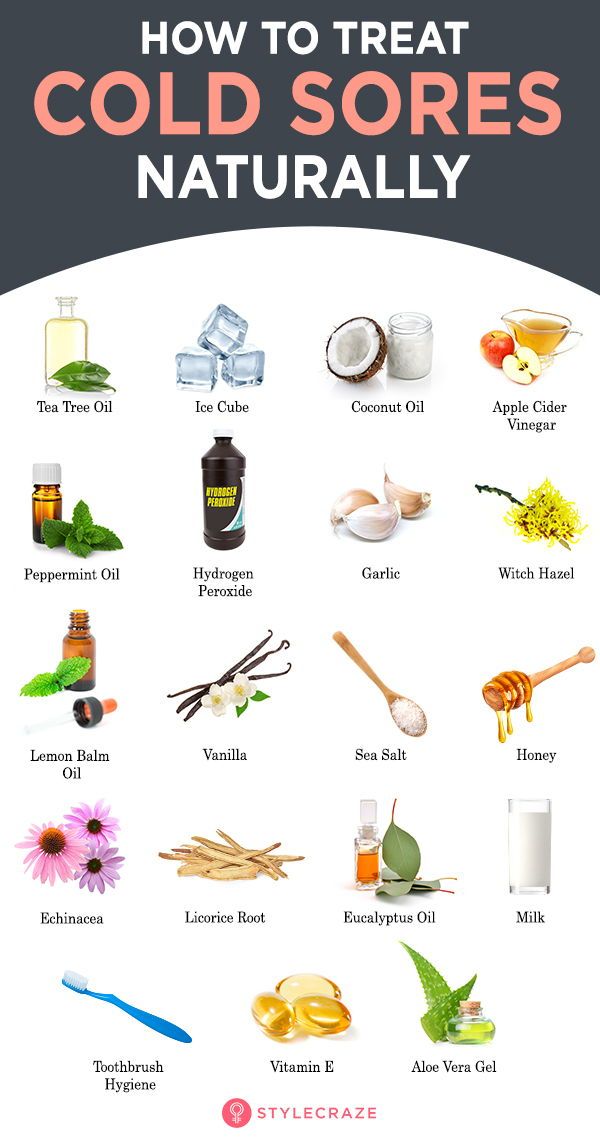 There may be variations in treatment that your pediatrician may recommend based on individual facts and circumstances.
There may be variations in treatment that your pediatrician may recommend based on individual facts and circumstances.
Cold Sores (for Kids) - Nemours KidsHealth
What Is a Cold Sore?
Cold sores are small blisters that are reddish and a little painful. They're usually on the outer edge of the lip or inside the mouth.
Cold sores can appear one at a time or in little bunches. They're filled with fluid, but crust over and form a scab before they go away. They last a week or two and usually don't need any special treatment.
Although they're called cold sores, you don't need to have a cold to get one. Some people call them fever blisters, but you don't have to have a fever to have one, either.
What Causes Cold Sores?
Cold sores are caused by a virus called herpes (say: HUR-peez). Herpes is one of the most common viral infections in the world. The medical name for the virus that causes cold sores is herpes simplex.
There are two types of herpes simplex infection: herpes simplex virus one (called HSV-1 for short) and herpes simplex virus two (called HSV-2 for short). Although both can cause cold sores around a person's mouth, most are caused by HSV-1.
HSV-1 is so common that most Americans get infected with it, although many never have any symptoms. People can catch HSV-1 by kissing a person with a cold sore or sharing a drinking glass or utensils, so it's easy to see why there are so many cold sores around.
Kids who get infected with HSV-1 may get cold sores occasionally for the rest of their lives. That's because even after the sores themselves dry up and go away, the virus stays in the body, waiting around for another time to come out and cause more sores. When a cold sore reappears, it is often in the same place as the last one.
How Can I Keep From Getting Cold Sores?
HSV-1 isn't a big deal. But it's a good idea to try to keep cold sores as far away as possible.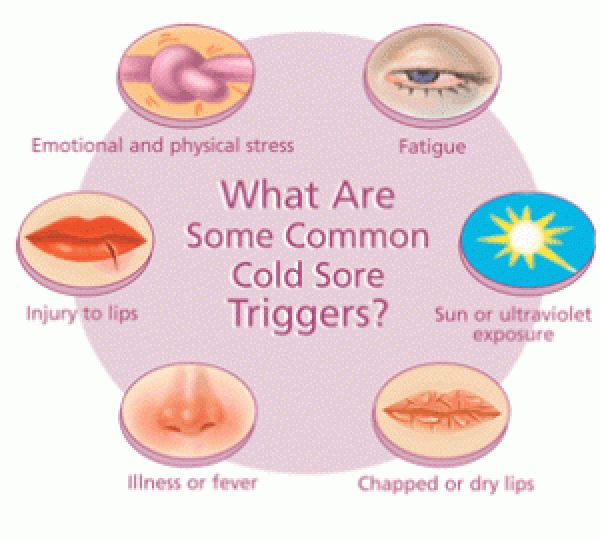 If someone you know has a cold sore:
If someone you know has a cold sore:
- Don't kiss him or her.
- Don't drink out of the same glass or use the same knife, fork, or spoon.
- Don't share towels, washcloths, or napkins.
If you've had cold sores before, it can be hard to tell what might make them come back. For some kids, too much stress, too much time in the sun, or getting sick can cause cold sores to reappear. Eating well, getting enough rest, and learning how to deal with stress are important things for any kid to do, especially a kid who is likely to get cold sores.
Putting on sunblock lip balm and sunscreen on the face before going out in the sun may help prevent cold sores from reappearing in kids who tend to get them.
What Can I Do if I Have a Cold Sore?
For most kids, the sores go away on their own without any special treatment from a doctor. If you get a cold sore, try holding some ice wrapped in cloth or a cool washcloth on the sore. It also might help to eat a popsicle.
Sometimes, if the cold sores are making a kid sick, a doctor may prescribe a special medicine that fights the herpes simplex virus. Some kids may take acetaminophen or ibuprofen if their sores are painful.
While you're waiting for the cold sore to go away, wash your hands well and often and don't pick at it. You'll only get in the way of your body's natural healing process. Picking at a cold sore is also bad news because it's easy to spread the virus to other parts or your body, like your fingers or eyes. Worse yet, you might spread the virus to other people. No one will thank you for giving them a cold sore!
Reviewed by: Larissa Hirsch, MD
Date reviewed: February 2019
Herpes treatment for children - PreAmbula
Herpes treatment for children - PreAmbula
Share
Herpes is an acute viral disease of the mucous membranes and skin. It is caused by the herpes virus, which can cause various diseases. For example, the familiar chicken pox, chicken pox, is also caused by a type of herpes virus.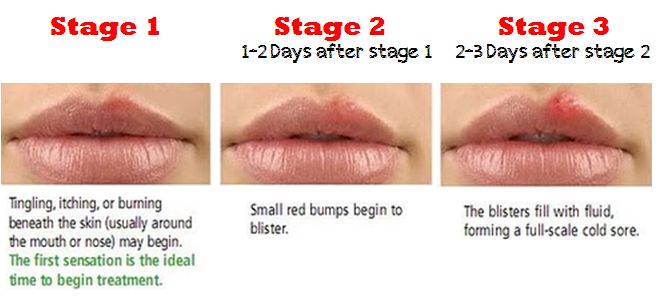
The disease is transmitted by airborne droplets. Once settled in the body of a child, the herpes virus never leaves him, aggravated by infections, stress, and hypothermia. Activating with any weakening of the immune system, the virus begins to multiply rapidly, manifesting itself as a “fever” on the mucous membrane and skin. He “jumps up”, most often, in the same place, but sometimes with a new aggravation, his location may change. nine0003
Treatment of herpes in children is aimed at minimizing the manifestation of symptoms, suppressing the activity of the virus.
Symptoms of herpes
General malaise, fever, muscle pain are characteristic features of the disease. In places of future rashes, tingling, itching, pain occur. Rashes are accompanied by the formation of wounds, as children comb the rash until the blood. This makes healing difficult for several days.
Ulcers also occur in the mouth - on the front of the tongue, the inside of the cheeks, on the gums, throat and palate.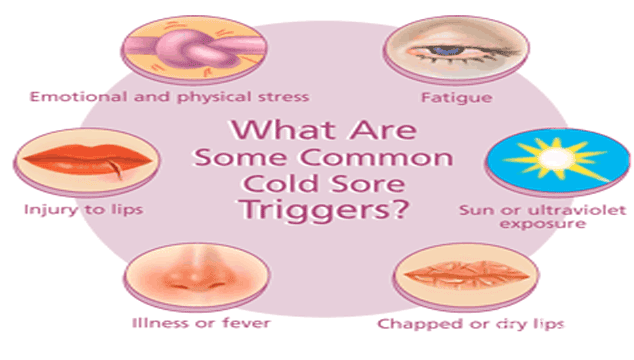 Swollen gums may bleed, lymph nodes in the neck swell and become painful. The herpes virus can infect the lining of the throat with painful small sores. It is difficult for the child to eat, drink drinks. Parents should control the process, not give a sick child solid or hot food, since with constant injury, healing can take weeks. nine0003
Swollen gums may bleed, lymph nodes in the neck swell and become painful. The herpes virus can infect the lining of the throat with painful small sores. It is difficult for the child to eat, drink drinks. Parents should control the process, not give a sick child solid or hot food, since with constant injury, healing can take weeks. nine0003
Herpes virus types
Human infection is possible with several herpes-type viruses.
The most common is the herpes simplex virus of the first type, which is manifested by a fever on the child's lips and causes general malaise.
Herpes simplex virus type 2 affects the genitals, and is the culprit of a generalized infection of newborns (a child becomes infected during the passage of an infected mother through the birth canal).
Varicella zoster virus (herpesvirus type 3) causes chickenpox in children (with primary infection), and with repeated manifestation - shingles.
The fourth, fifth and sixth types of herpes viruses provoke the development of infectious mononucleosis in children. The disease is characterized by high fever, enlarged lymph nodes, liver and spleen. Type 6 virus in children under 2 years of age causes infantile roseola, which is manifested by maculopapular rashes. Viruses 6 and 7 types can cause exanthema in newborns. nine0003
The disease is characterized by high fever, enlarged lymph nodes, liver and spleen. Type 6 virus in children under 2 years of age causes infantile roseola, which is manifested by maculopapular rashes. Viruses 6 and 7 types can cause exanthema in newborns. nine0003
Herpes treatment
Effective therapy of the disease must begin at the first sign of the manifestation of the disease. A neglected infection increases the likelihood of possible complications and becomes chronic.
For the treatment of herpes in children are used:
- antiviral drugs - relieve itching and pain;
- immunostimulants - increase immunity, do not allow the virus to capture internal organs and new sections of the mucous membranes; nine0038
- interferons - destroy viruses, preventing them from multiplying.
At high temperatures, it is necessary to take antipyretics and take plenty of fluids. With frequent relapses, the doctor prescribes general strengthening agents, vitamins, etc.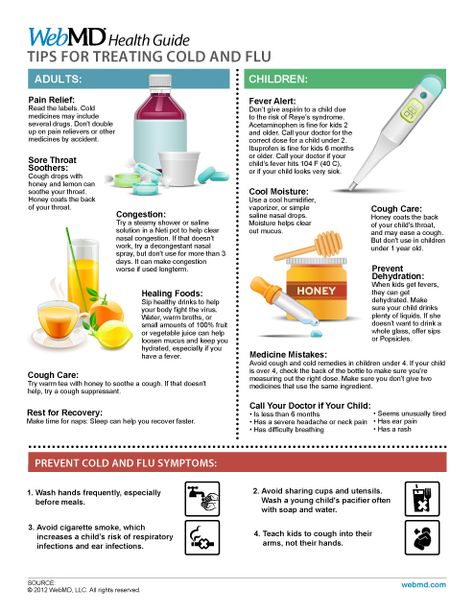
How to prevent the manifestations of herpes
The disease recurs when the child's body is weakened. Therefore, overexertion (mental and physical) and hypothermia should be avoided. It is necessary to eat right, treat chronic diseases of the nasopharynx, bad teeth - foci of chronic infection, harden, exercise, increase immunity, in general. nine0003
Herpes in a child
We treat children according to the principles of evidence-based medicine: we choose only those diagnostic and treatment methods that have proven their effectiveness. We will never prescribe unnecessary examinations and medicines!
Make an appointment via WhatsApp
Prices Doctors
The first children's clinic of evidence-based medicine in Moscow
No unnecessary examinations and medicines! We will prescribe only what has proven effective and will help your child.
Treatment according to world standards
We treat children with the same quality as in the best medical centers in the world.